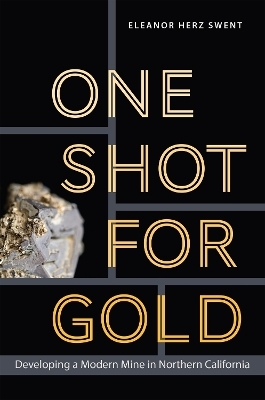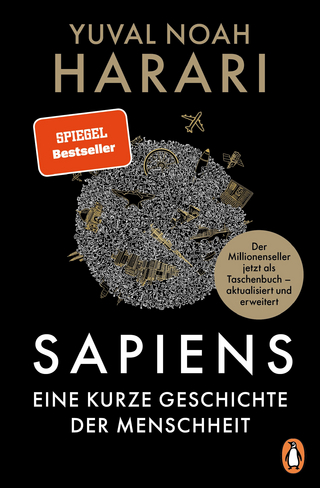
One Shot for Gold
Developing a Modern Mine in Northern California
Seiten
2021
University of Nevada Press (Verlag)
978-1-64779-006-6 (ISBN)
University of Nevada Press (Verlag)
978-1-64779-006-6 (ISBN)
- Titel z.Zt. nicht lieferbar
- Versandkostenfrei innerhalb Deutschlands
- Auch auf Rechnung
- Verfügbarkeit in der Filiale vor Ort prüfen
- Artikel merken
In 1978, a geologist working for the Homestake Mining Company discovered gold in a remote corner of California's Napa County. This discovery led to the establishment of California's most productive gold mine in the twentieth century. This book traces the history of the McLaughlin Mine and how it transformed a community and an industry.
In 1978, a geologist working for the Homestake Mining Company discovered gold in a remote corner of California's Napa County. This discovery led to the establishment of California's most productive gold mine in the twentieth century. Named the McLaughlin Mine, it produced about 3.4 million ounces of gold between 1985 and 2002. The mine was also one of the first attempts at creating a new full-scale mine in California after the advent of environmental regulations and the first to use autoclaves to extract gold from ore.
One Shot for Gold traces the history of the McLaughlin Mine and how it transformed a community and an industry. This lively and detailed account is based largely on oral history interviews with a wide range of people associated with the mine, including Homestake executives, geologists, and engineers as well as local neighbors of the mine, officials from county governments, townspeople, and environmental activists. Their narratives— supported by thorough research into mining company documents, public records, newspaper accounts, and other materials—chronicle the mine from its very beginning to its eventual end and transformation into a designated nature reserve as part of the University of California Natural Reserve System.
A mine created at the end of the twentieth century was vastly different from the mines of the Gold Rush. New regulations and concerns about the environmental, economic, and social impacts of a large mine in this remote and largely rural region of the state-required decisions at many levels. One Shot for Gold offers an engaging and accessible account of a modern gold mine and how it managed to exist in balance with the environment and the human community around it.
In 1978, a geologist working for the Homestake Mining Company discovered gold in a remote corner of California's Napa County. This discovery led to the establishment of California's most productive gold mine in the twentieth century. Named the McLaughlin Mine, it produced about 3.4 million ounces of gold between 1985 and 2002. The mine was also one of the first attempts at creating a new full-scale mine in California after the advent of environmental regulations and the first to use autoclaves to extract gold from ore.
One Shot for Gold traces the history of the McLaughlin Mine and how it transformed a community and an industry. This lively and detailed account is based largely on oral history interviews with a wide range of people associated with the mine, including Homestake executives, geologists, and engineers as well as local neighbors of the mine, officials from county governments, townspeople, and environmental activists. Their narratives— supported by thorough research into mining company documents, public records, newspaper accounts, and other materials—chronicle the mine from its very beginning to its eventual end and transformation into a designated nature reserve as part of the University of California Natural Reserve System.
A mine created at the end of the twentieth century was vastly different from the mines of the Gold Rush. New regulations and concerns about the environmental, economic, and social impacts of a large mine in this remote and largely rural region of the state-required decisions at many levels. One Shot for Gold offers an engaging and accessible account of a modern gold mine and how it managed to exist in balance with the environment and the human community around it.
Eleanor Herz Swent is a past president of the Mining History Association and winner of the Rodman Paul award for contributions to mining history. She was born and raised in Lead, South Dakota, home of the Homestake Mine, and lived for many years in mining communities. In conjunction with the University of California-Berkeley Oral History Center, she helped create an oral history series on western mining and was the sole interviewer for this book. She currently lives in Palo Alto, California.
| Erscheinungsdatum | 11.06.2021 |
|---|---|
| Reihe/Serie | Mining and Society Series |
| Verlagsort | Reno |
| Sprache | englisch |
| Maße | 152 x 229 mm |
| Gewicht | 454 g |
| Themenwelt | Geisteswissenschaften ► Geschichte ► Allgemeine Geschichte |
| Geisteswissenschaften ► Geschichte ► Regional- / Ländergeschichte | |
| Naturwissenschaften ► Biologie ► Ökologie / Naturschutz | |
| Technik ► Bergbau | |
| ISBN-10 | 1-64779-006-9 / 1647790069 |
| ISBN-13 | 978-1-64779-006-6 / 9781647790066 |
| Zustand | Neuware |
| Haben Sie eine Frage zum Produkt? |
Mehr entdecken
aus dem Bereich
aus dem Bereich
eine Familiengeschichte der Menschheit
Buch | Hardcover (2023)
Klett-Cotta (Verlag)
49,00 €
Eine wahre Geschichte von Schiffbruch, Mord und Meuterei
Buch | Hardcover (2024)
C.Bertelsmann (Verlag)
25,00 €


